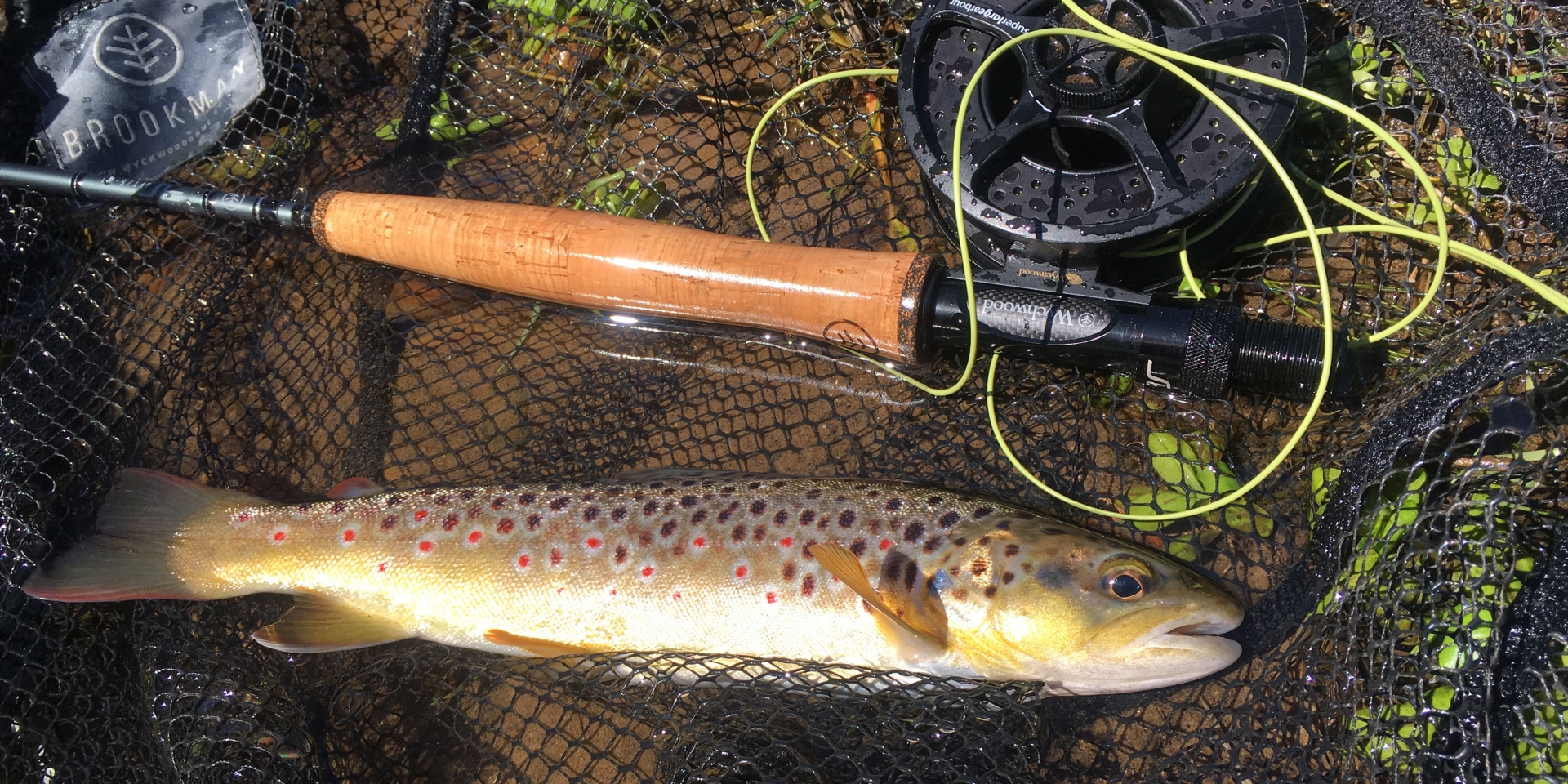As the large dark olive ebbs off in the next few weeks, we have what I would regard as the most exciting time of the dry fly season, especially when you consider the use of a fly that does not hatch from water - the Hawthorne and the black gnat. Why is this time so special some may ask? I spend a lot of time fishing rivers that are not the 'cliche' of fly fishing; these can vary from urban rivers to coarse fishing rivers and tend not to have strong hatches. But this is one of the only times throughout the season you can get to catch a trophy trout rising to a dry fly.
In poor quality water you can really struggle all season for dry fly sport but hawthorn and gnat time is when you can go down your local little stream or river that you have always walked past and regarded as a 'bait' river... and catch! All the biggest trout I have ever caught have came to the hawthorn but what should you be looking for when thinking about using these flies and a how do you fish them?
Without getting too much into entomology the Hawthorn is a terrestrial fly and at times you can see huge black clouds swarming around meadows next to rivers. They are unmissable, as they look like the normal bluebottle fly we all know (and hate) but with legs that hang well below their body. They're also poor fliers - they almost always look like they are hovering - and this is where we as fly fishers come in. People who have wrote about hawthorn in the past say you need a good wind to get them onto the river, but I have found even in no wind there are a huge amount that end up on the river's surface.

There is no mistaking that the trout absolute love this meal. I have seen trout so locked onto them they are oblivious to what is going on around and you can almost cast at them from a rod length away! A drowning hawthorn does not move when it hits the water; there might be a slight buzz from the wing but when trapped in the surface film, it's going nowhere. So what does this mean for a fly angler? We basically need to present a fly with a drag-free drift - a skating fly or dragged fly could send you home fishless - so use any methods in your armoury to fish without drag. If this is a problem for you, land the fly one metre above the fish to lessen the chance of drag. If you don't see any hawthorn on the surface you can guarantee that the trout have been feasting on them in the previous days and weeks and they have become aware of the profile for a food item so, even with no fish rising, a Hawthorne imitation can leave you breathless as it gets smashed out the blue!
Most of us fly tyers always looks to make the the best looking fly, as its great fun but also the reality from hundreds of years have proved that the best flies are very simple. There are some awesome looking hawthorn imitations out there but there is one fly for me beats everything hands down and that is the old school loch fly called the Bibio. Quite oddly you can read hundreds of magazines and this fly is never mentioned in connection with rivers but its absolutely devastating. Using a touch of floatant will keep this fly in the surface film, giving a deadly profile. A size 14 will be perfect.
Also, one thing to look out for is the dreaded 'masked hatch'. This is where you can see lots of hawthorn on the surface and can be fooled into thinking they (the fish) are taking them when they could of opted for the much smaller fly known as the black gnat. Again, this fly is a terrestrial fly like the hawthorn but smaller in size and a hook size of 16 or 18 in the Bibio will immitate and get you on the fish.
Don't forget to try a different venue than your normal fly water, that old dirty river your Grandad said used to be the colour of red dye could well be gin-clear and have free-rising wild brown trout, ready to be conquered with this awesome way of fishing.
Glen Pointon


